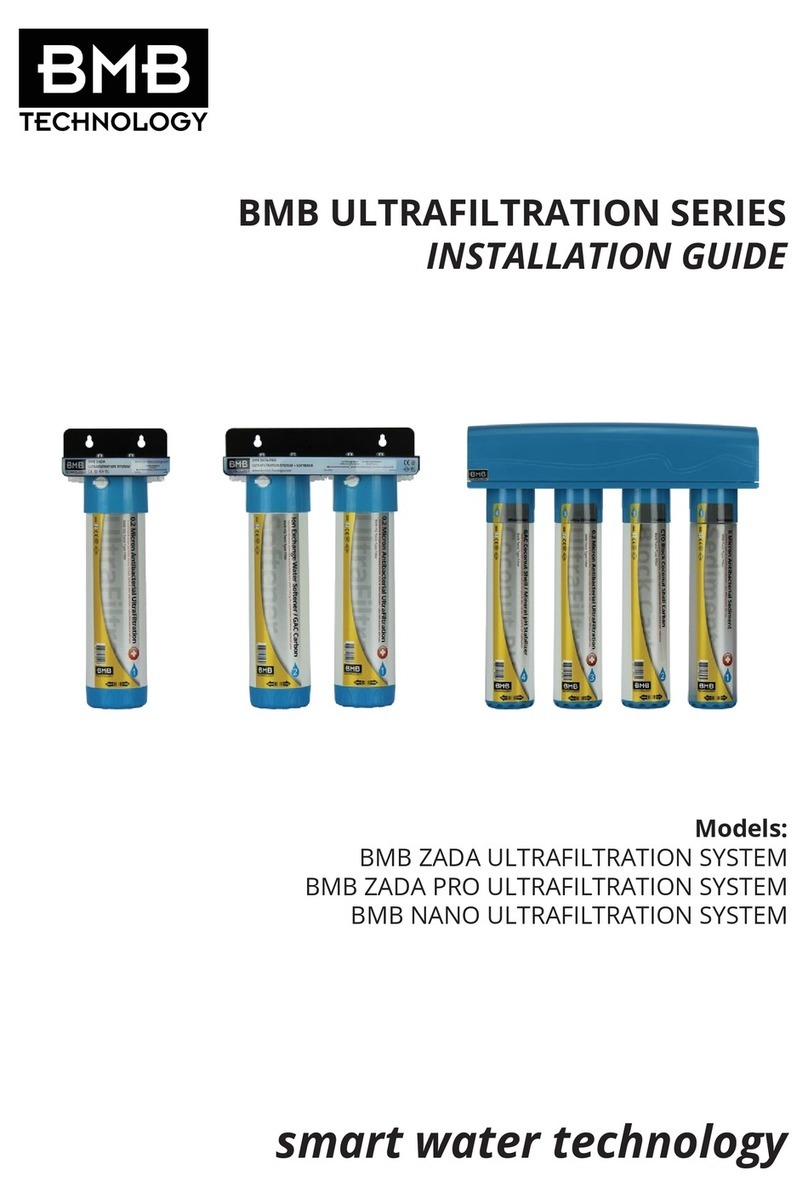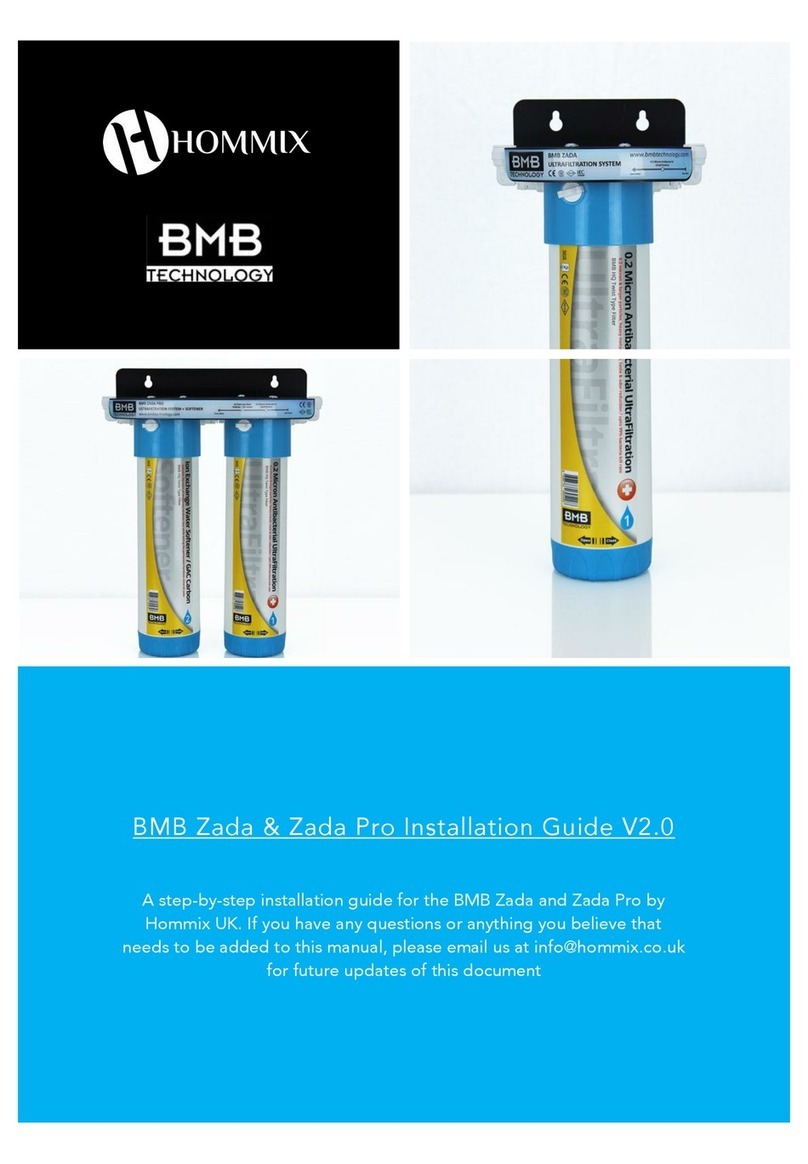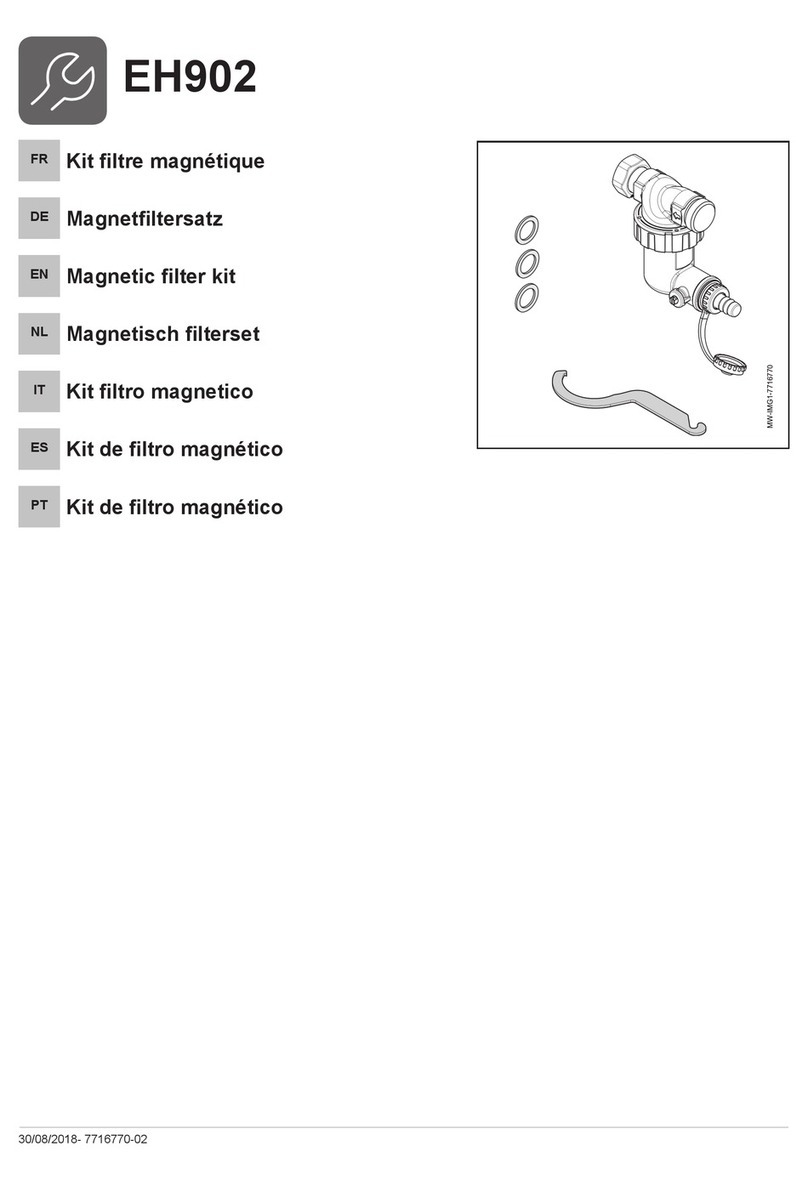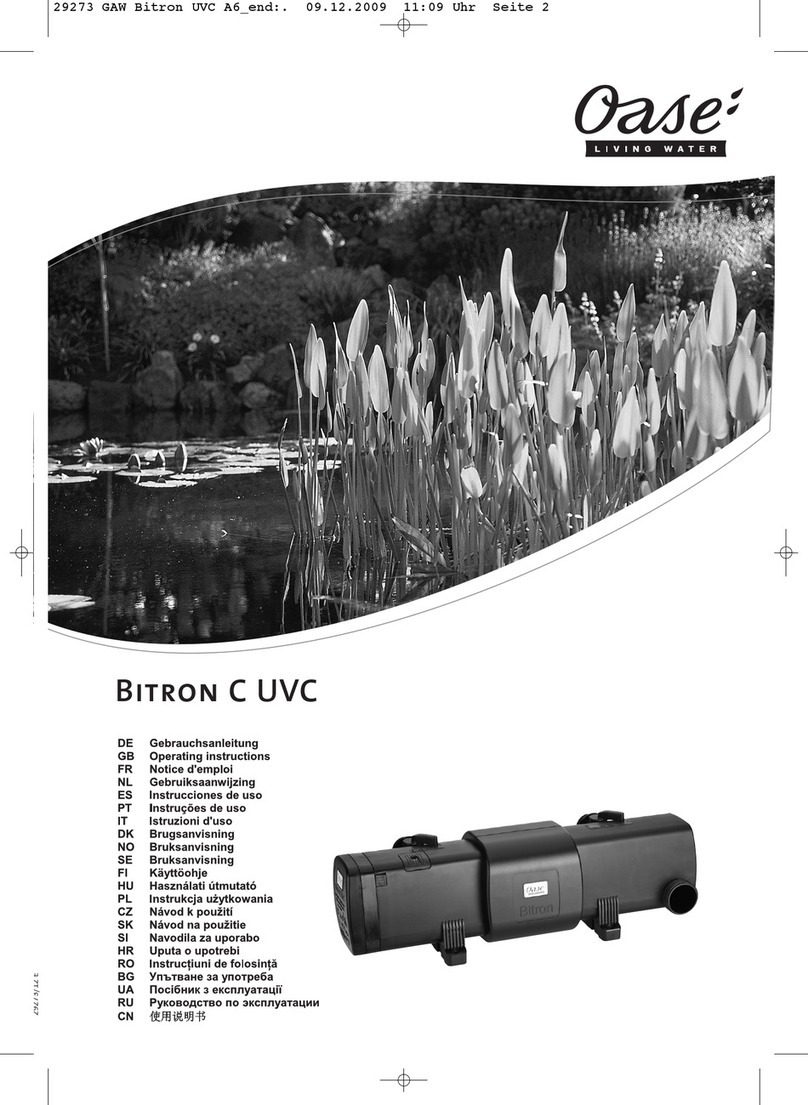BMB Technology Nova Pro Instruction manual

Installation, Operation & Maintenance
Manual
For the Following Product-
*2021 MODEL- BMB Nova Pro + Biocera A-A-

Index-
Page 1 - 2, …..……….. Introduction to Nova Pro
Page 3 –10, ………….. Nova Pro water purification technology
and stages explained.
Page 11 –15, ………… Nova Pro Technical information and
component locations.
Page 16, ..…………….. Tools required for installation
Page 17- 18, ………….. Nova Pro basic set up diagrams
Page 19 –20, …………. Use of push fits
Page 21, ………………. Installation components
Page 22 - 23, …………. Installation steps
Page 24 –26, ………… RO Membrane installation
Page 27,……………….. Tank Installation
Page 28 -29, ………….. Start up and commissioning
Page 30 - 31, …………. Digital interface instructions
Page 31, …………….... Maintenance
Page 33, ………………. Going on holiday
Page 34, ………………. Trouble shooting table
Page 35 –36, …………. Pre & post filter change
Page 37, ………………. Service/filter change log
Page 38, ……………….. Warranty registration
Page 39, ……………….. Limited warranty


Page 1of 44
Introduction
The purpose of the Installation, Operation & Maintenance Manual is to give users a
reference for Technical Specifications, Connection Diagrams, Installation Procedures,
System Operation and System Maintenance of their BMB Technology Reverse Osmosis
System.
The essential information contained in this manual will allow the user to make full use of the
system. In the interest of brevity, an attempt has been made to include only that information
which will be used under normal operating circumstances. For special situations, it is
recommended that the user contact their authorized dealer or BMB Technology
(www.bmbtechnology.com).
Reverse Osmosis is the most advanced technology of water purification in use today. The
technique uses a nanotechnology enabled semipermeable membrane which can reduce or
remove most harmful impurities found in water including: microorganisms, nitrates, heavy
metals, insecticides and much more (see Figure 1 on page 3 for a comparison of different
filtration technologies).
Fig 2, on page 3 lists a more detailed filtration performance of specific materials. These
materials are only a partial list of the virtually hundreds of thousands of molecules that
Reverse Osmosis can filter out.
Osmosis is defined as the process of molecules passing through a semipermeable
membrane, from a less-concentrated solution to a more-concentrated solution. An example
of Osmosis is the roots of plants drawing water from the soil. Reverse osmosis is simply the
opposite of this process where molecules are forced through a semipermeable membrane to
form a less-concentrated solution.
Essentially, the Reverse Osmosis filter (RO membrane or RO element) has nano sized
pores that help remove microscopic contaminants from the incoming water (more-
concentrated solution) to produce better quality water (less-concentrated solution). An
illustration of this process can be found page 4, Figure 3.

Page 2of 44
There is a bit more to the Reverse Osmosis process as it pertains to Reverse Osmosis
systems, however, this will be explained in more detail in the upcoming sections.
This BMB Technology system harnesses the power of Reverse Osmosis to purify the
incoming water. It was specifically designed to enhance the Reverse Osmosis process by
using sensors, pumps, probes, minerals, software and other components. This system will
be mainly used in residential and commercial applications to reliably produce high quality
water.
This BMB Technology Reverse Osmosis system is one of the most technologically advanced
water filtration systems in the world. It incorporates state of the art filters, easy Plug & Play
components and Quick-Change Filter Technology (QCFT) for low maintenance cost.
The system also comes equipped with a digital controller with Smart Water capabilities. It
continuously analyzes the purified water and displays the results on screen. The system will
know when water is consumed and will automatically flush the reverse osmosis filters
afterwards to maintain water quality and extend filter lifetime. The system works in the
background to track water temperature, errors and filter lifetime in order to give the highest
up time possible while delivering the best water quality and user experience.
Some of the significant features of this product line are as follows:
•
Elegant & compact design / LED light-up during operation
•
Standing bracket, no mounting required, easy installation
•
Locking quick change pre-filters for low maintenance cost
•
Nano zinc powder activated pre-filters for antibacterial performance
•
BIOCERA A-A Antioxidant, Alkaline, ORP, re-mineralizing Filter
•
High Capacity 600 GPD configuration
•
Direct flow (no tank required) option for maximum freshness
•
Smart capabilities optimize system performance and water quality
•
Set and track filter lifetime to maximize cost savings
•
Instantaneous analysis of water (TDS)
•
Automatic flush of membranes for water quality and max. filter lifetime
•
Quick Connect parts for easy service and maintenance
•
Dual manometers to track incoming and pump water pressure
•
1-2 LPM flow rate- 2.5 bar incoming pressure
•
Tank installation option available for low pressure or High demand situations

Page 3of 44
Fig1,
Water Filtration Technology’s spectrum
Fig 2,
Estimated Reverse Osmosis Rejection Percentages
* Figures given above are estimates of normal
BMB Technology
reverse osmosis membrane filter
performance, under normal conditions and water quality.

Page 4of 44
Fig 3,
Reverse Osmosis Membrane –
Nova Pro + Biocera A-A Filtration process,
The most essential part of any Reverse Osmosis system is its filters. It is also a
misconception that all filters remove materials from the incoming water, some filters actually
add materials into water to improve the taste, increase the mineral content and other health
benefits. Although a Reverse Osmosis system can consist of many filters, they all fall into
one of three categories with each category having a very specific purpose:
•
Pre-Filters
•
Reverse Osmosis Membrane
•
Post-Filters BIOCERA A-A , Antioxidant Alkaline

Page 5of 44
Pre-filtration before Reverse osmosis
The main purpose of the pre-filters is to protect the more expensive Reverse Osmosis
membrane filter from specific contaminants.
Traditional Reverse Osmosis systems have pre-filters which target sediment and chlorine as
they can damage the reverse osmosis filter and cause it to fail early. Additionally, traditional
systems have a significant health risk where although the filters are changed periodically, the
outside casing (housing) for these filters stay the same usually throughout the lifetime of the
system. This can result in unhygienic conditions as contaminants will accumulate on the
inside surface of the housing over time and can be gradually released into the incoming
water.
This BMB Nova Pro Reverse Osmosis System has three state-of-the-art pre-filters. The filter
element and housing are a single unit. Consequently, during filter replacement periods they
are changed at the same time in order to maintain system hygiene. Also, all of the pre filters
are easy to change and have a click-and-lock mechanism in order to reduce the risk of
leaks. Once the filter is being changed, simply keep twisting it into place slowly until a click is
heard. To remove the filter, turn and hold the lock to open position with one hand while
twisting the filter with the other hand until it is removed from the system.
Although the RO membrane filters used in this system are fully efficient in removing
microorganisms, the first and last pre-filters are equipped with Nano Zinc powder for
antibacterial effects. This prevents biofilm buildup on the membrane sheet surface which can
lead to fouling of the membrane filter. In addition to particles and chlorine, the pre-filters in
this system are designed to reduce heavy metals (iron, manganese and other rust), dust and
very fine particles down to 0.5 microns. This will allow the membrane filters to work with less
effort to produce high quality water. Please see the table below for a detailed list of the pre-
filters.
Position
Filter
Type
Filtration
1
5 Micron Antibacterial Sediment
Meltblown
Microorganisms, particles
2
CTO Block Coconut Shell Carbon
CTO Block
Chlorine, Chloramines and
other organic compounds
3
0.5 Micron Antibacterial Nano
Carbon
Meltblown +
GAC
All of the above + fine particles,
heavy metals such as iron,
manganese and other rust

Page 6of 44
Pre-filters
Filter 1
Antibacterial 1 Micron Sediment
The two-stage filter is made from nano zinc powder infused, NSF certified polypropylene
fibers. The fibers have a +97% efficiency of filtering particles that are 5 microns or larger
while the nano zinc powder acts as an antibacterial agent for any microorganisms in the
incoming water supply. Although zinc is an element that humans cannot live without, it is
lethal to microorganisms such as bacteria, virus, algae, fungi, etc.
Contaminants Reduced or Removed:
Sediment, particles, dust, rust, iron, manganese, microorganisms (bacteria, algae, fungi,
etc.)
Filter 2
Chlorine Tase Odour (CTO) Block, Coconut Shell carbon
The two-stage filter is made from NSF Certified Coconut Shell Carbon which has a very high
capacity to reduce taste and odor compared to charcoal filters. With a higher absorbent
level.
Contaminants Reduced or Removed:
Chlorine, chloramine, pesticides, herbicides, nitrate, phosphate, lithium, pharmaceuticals,
microplastics, arsenic, asbestos, lead, zinc, copper, mercury and other heavy metals
Filter 3
Antibacterial 0.5 Micron Sediment
The two-stage filter is made from nano zinc powder infused, NSF certified polypropylene
fibers. The fibers have a +97% efficiency of filtering particles that are 0.5 microns or larger
while the nano zinc powder acts as an antibacterial agent for any microorganisms in the
incoming water supply. Although zinc is an element that humans cannot live without, it is
lethal to microorganisms such as bacteria, virus, algae, fungi, etc.
Contaminants Reduced or Removed:
Sediment, particles, dust, rust, iron, manganese, microorganisms (bacteria, algae, fungi,
etc.)

Page 7of 44
Reverse osmosis Membrane- filters 4 & 5 Total - 600 GPD
At the heart of every Reverse Osmosis system is the membrane filter’s. The membrane filter
consists of microporous, semipermeable membrane sheets. The sheets are glued to each
other around three edges with a thin spacer in between (prevents the sheets from sticking to
each other) to form a “leaf”. Next, depending on the desired capacity of the membrane filter,
multiple leaf’s with mesh spacers in between (to allow the water to pass between leaf’s) are
stacked on top of each other. The stack is then spirally wound with the open end of the leaf
adhered to a perforated tube that runs up and down the center.
The membrane is constructed in this manner because unlike the pre-filters which are
designed as “dead-end filtration”, Reverse Osmosis membranes are designed as “crossflow
filtration”. In dead-end filtration, the feed water is passed perpendicular to the filter surface in
order to trap large particles. However, in Crossflow filtration the feed water is passed
tangential to the filter surface so the more-concentrated solution (particles) exits at the end
of the filter while the less-concentrated solution (purified water) permeates through the
membrane surface, gets trapped between the sheets and exits out of the perforated tube.
Figure 4 below shows the difference between dead-end filtration and crossflow filtration.

Page 8of 44
The membrane pores are so small that if the Reverse Osmosis filter was designed as dead-
end, the pores would be clogged up in a matter of few litres due to the abundant number of
dissolved solids found in the feed water and the extremely small membrane pore size.
The membrane filter has one water inlet and two exits. The feed water first travels through
the pre-filters and then to the membrane filter. At the exit of the membrane filter one of the
ports is the waste water (more-concentrated solution) which is connected to the drain, while
the other port is the purified water (less-concentrated solution) which is plumbed to the post-
filters. Figure 5 on page 9 shows a detailed schematic of the membrane filter.
BMB Technology Reverse Osmosis membranes are made of the highest quality Thin Film
Composite (TFC) polyamide and are designed to remove a wide variety of both aesthetic
and health related contaminants. Additionally, the following have been, considered when
designing the membrane filter:
•
Average membrane pore size of 0.0005 m
•
Ultra Low Pressure (ULP) membrane (min. 2 bar feed water pressure)
•
Included system pump for optimum osmotic pressure
ReverseOsmosis Membrane Filter

Page 9of 44
Semipermeable Membrane
Purified Water
Post Filtration, multi stage –BIOCERA A-A FILTERS 6 & 7

Page 10 of 44

Page 11 of 44
Nova Pro Specifications
Parameter
Value
Electricity
100 - 240 VAC / 50-60 Hz
Feed Water Pressure
2.5 Bar Min. - 6 Bar Max.*
Feed Water Temperature
4 - 40
o
C
Feed Water Connection
3/8"
System Dimensions (L x W x H)
42 cm x 30 cm x 49 cm
System Weight (no water)
16 KG
Tank Dimensions (L x W x H)
24 cm x 24 cm x 37 cm
**
The supply water requirements for this system can be found in
Table below.
If the water supply does not meet these requirements, the filter lifetime and output water
quality of the system can be affected. Please see section 7.1 for the recommended filter
lifetime of this system. This duration should be reduced depending on how much the water
quality exceeds the limits. Please also see section 7.2 on how to adjust the filter change
duration in the user interface.
If the feed water is supplied with raw well water, laboratory test of the water should be done
before installing the system. If there is a significant exceeding of these limits, a well water
treatment system at the source should be considered to correct the water quality.
The main components for this system can be found on the next page.
Parameter
Value
pH
6.5 - 8.5
Turbidity
< 5 NTU
TDS
< 500 PPM
Hardness
< 500 PPM CaCO3(50 oF) (28 odH)
Chloride
< 250 PPM
Free Chlorine
< 0.7 PPM
Iron
< 0.1 PPM
Manganese
< 0.1 PPM
Silica
< 0.1 PPM
Chemical Oxygen Demand
< 5 PPM O2
Total Bacteria Count
< 50 CFU / mL
E. Coli
< 3 CFU

Page 12 of 44
1
2
5
6
3
7
8
14
13
4
9
10
11
12

Page 13 of 44
List of system components and functions
System Filter locations
Pre filters
No:
Component
Function
1
Power Supply
Supplies 24V / 3.7A to the system
2
Low Pressure Switch
Prevents water production at low inlet water pressure in order to protect the system from overheating, will
give a "No Water" alarm on the digital controller
3
Inlet Water Solenoid Valve
Closes feed water supply when system goes into standby or alarm mode
4
LED Strip
Acts as a visual guide, lights during water production
5
Inlet Water Pressure Manometer
Measures feed water pressure
6
Pumping Pressure Manometer
Measures pumping pressure
7
Pump
Increases feed water pressure to supply the reverse osmosis membrane filters at optimum osmotic pressure
8
Digital Controller
Controls all system components, measures TDS and regulates filter lifetime
9
Auto-Flush Solenoid Valve
Activates in between water production and standby mode to flush the reverse osmosis membrane filters for
10 seconds in order to protect them from caking
10
Flow Restrictor
Controls ratio of produced water to waste water for optimum reverse osmosis membrane filter performance
11
High Pressure Switch
Activates pump during low pressure, stops pump and sends system to standby mode during high pressure
12
Check Valve
Prevents production of waste water during standby mode
13
TDS Probe
Measures produced water TDS before remineralization
14
LED On/Off Button
Turns system on or off

Page 14 of 44
post filters
Reverse osmosis membranes

Page 15 of 44
System on Board Water Ports
This system comes with four water ports on the side for easy installation and maintenance.
Since the system is wet tested after assembly, it is shipped with plugs on all of the ports in
order to prevent any potential leaking in the box from residue water that may be left after
testing. It is important to note that if the system does not require a tank, the plug on the
“Tank” connection should be left intact.

Page 16 of 44
Planning the Installation
The following tools will be needed for the installation of this system. Please see Table below
Tools Required
Installation Function
Electric Drill
Open hole on sink to mount the faucet*
5 mm or 1/8” diamond tip drill bit
Pilot hole for faucet*
12 mm or 1/2” diamond tip drill
bit
Main hole for faucet stem*
7 mm or ¼ tip drill bit
Tubing hole for drain saddle
Adjustable Wrench
Installing feed water diverter valve, metal ball valve and
faucet
Phillips Screw Driver
Mount drain saddle
Sharp Scissors or Knife
Shorten tubing if needed
BMB Nova Pro does not ship with a tank and unless the water pressure is below 2 bar or the
consumption is high (more than 300 liters / day), it will not require one.

Page 17 of 44
Nova Pro connection diagram
Below a connection diagram can be found for the BMB Nova Pro Model. The BMB Nova Pro
model is a system that can be used for both residential and commercial applications. The
system is a direct flow model (tankless) that does not ship with a tank. Consequently, all
purified water is instantaneously generated and consumed (without waiting in a tank) which
will increase the purified water health and quality benefits.
Feed
Faucet
Other BMB Technology Water Filtration System manuals
Popular Water Filtration System manuals by other brands

American Water Service
American Water Service PTE-8 Installation, operation and maintenance manual

3M
3M CS-340 Series Installation and instruction manual
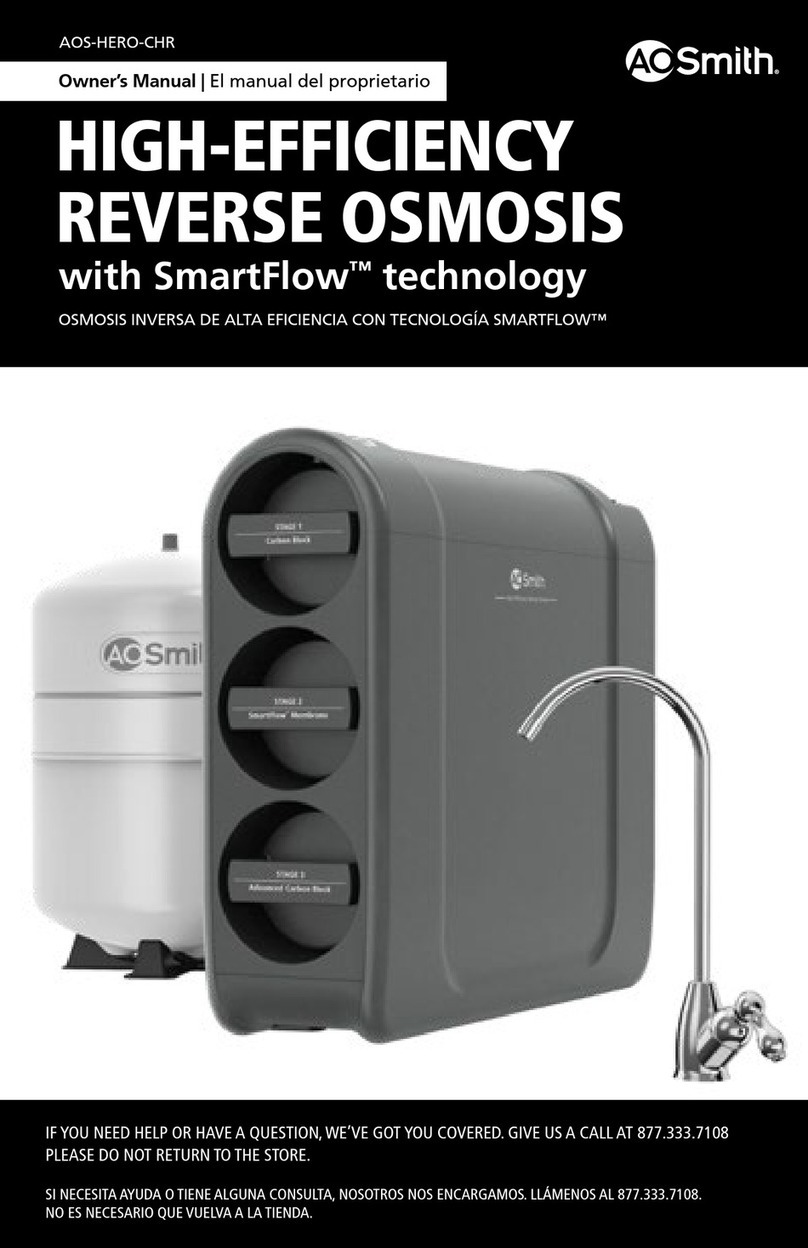
A.O. Smith
A.O. Smith AOS-HERO-CHR owner's manual
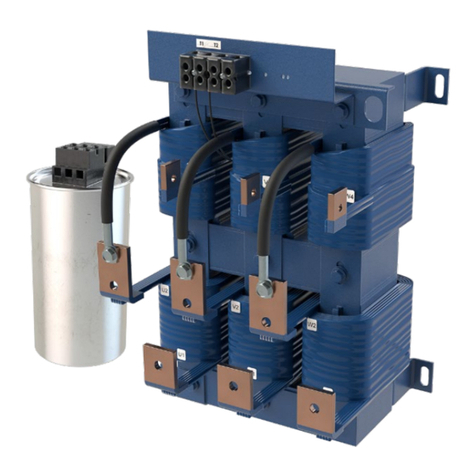
MTE
MTE Matrix E-Series Technical reference manual

Insignia
Insignia NS-LGLT5531 Quick setup guide
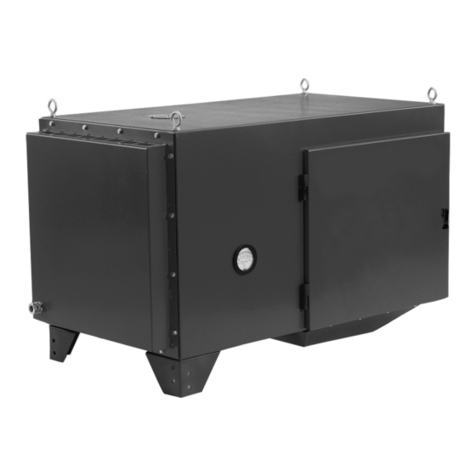
Donaldson Torit
Donaldson Torit WSO M Installation and operation manual
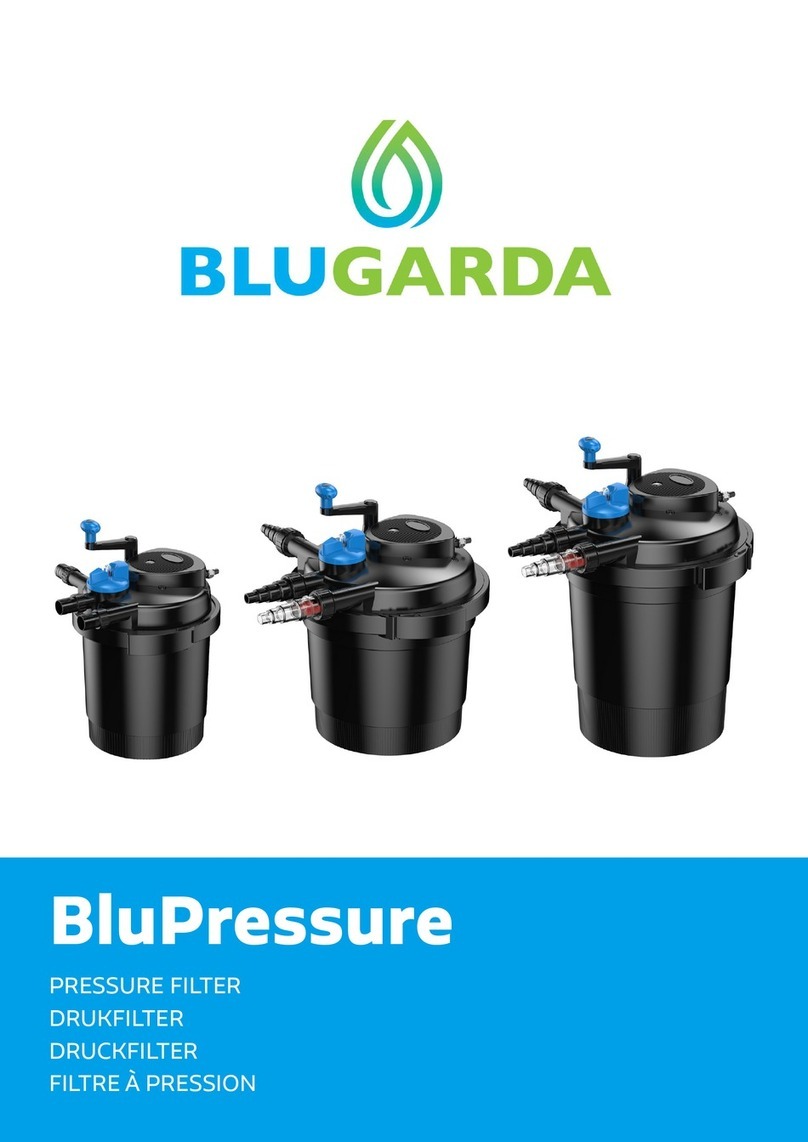
BLUGARDA
BLUGARDA BluPressure manual
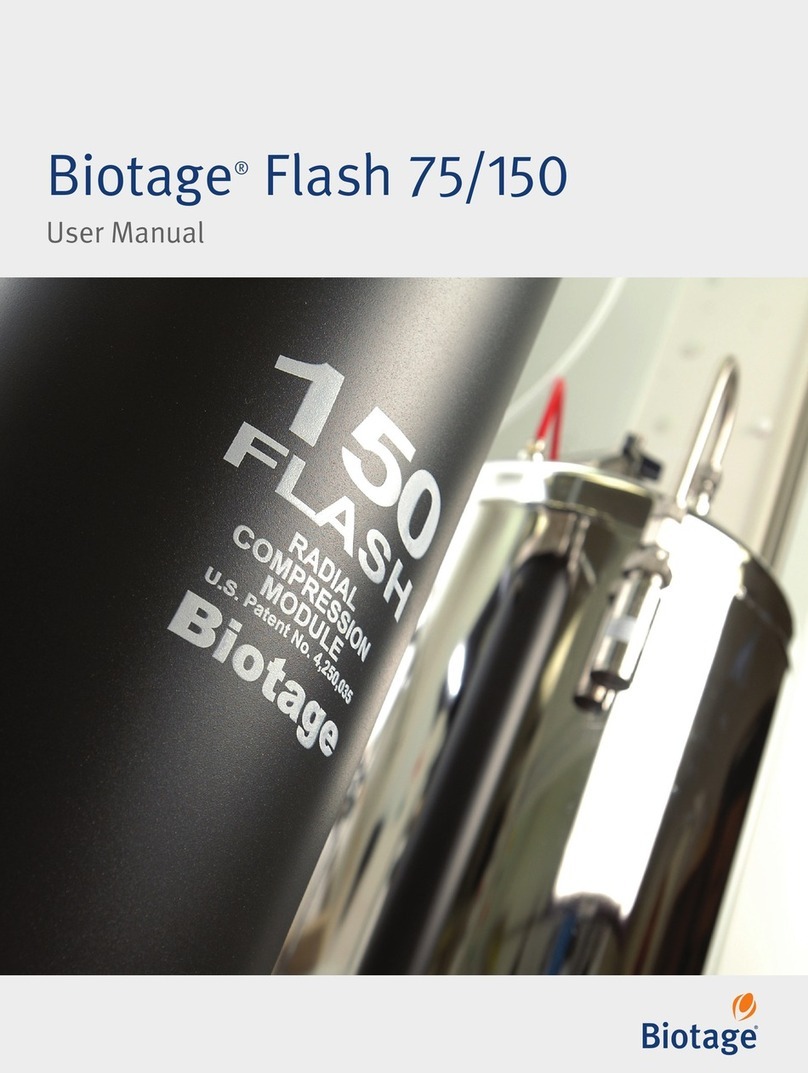
Biotage
Biotage Flash 75 user manual

EHEIM
EHEIM Biopower Series manual
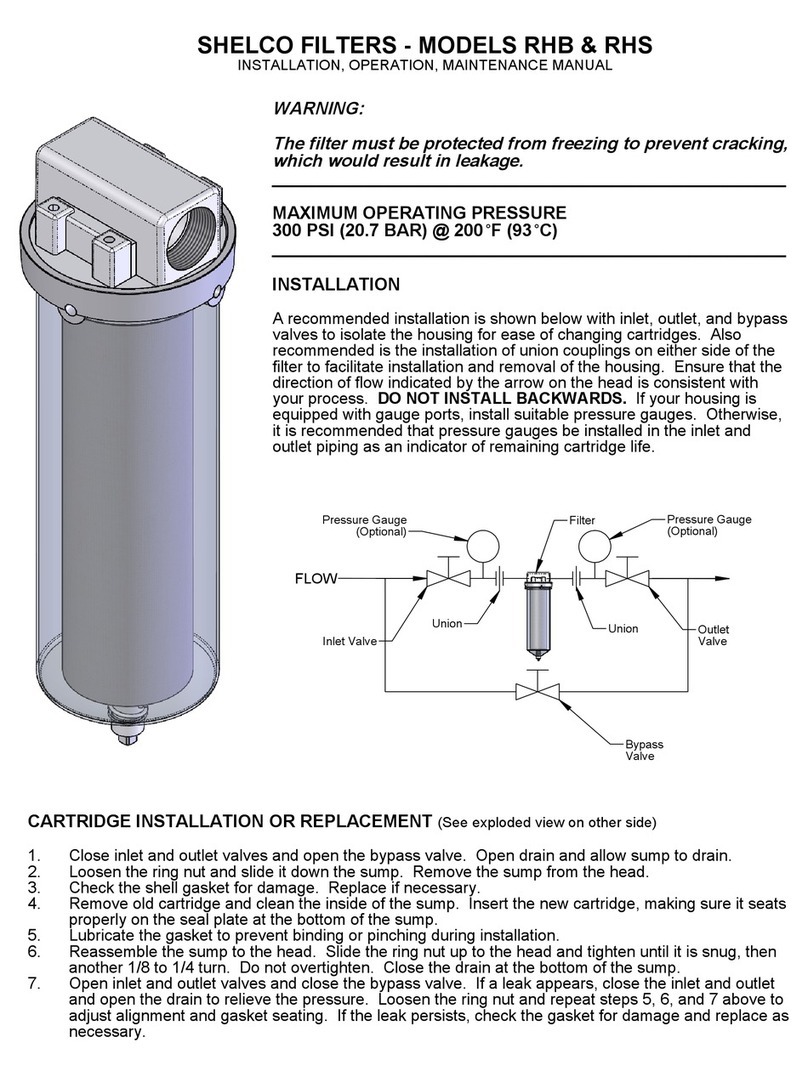
SHELCO FILTERS
SHELCO FILTERS RHB Installation, operation & maintenance manual

Hague Quality Water
Hague Quality Water WaterMax H6000 Owner's manual and installation guide

IST
IST MRO001 instruction manual
